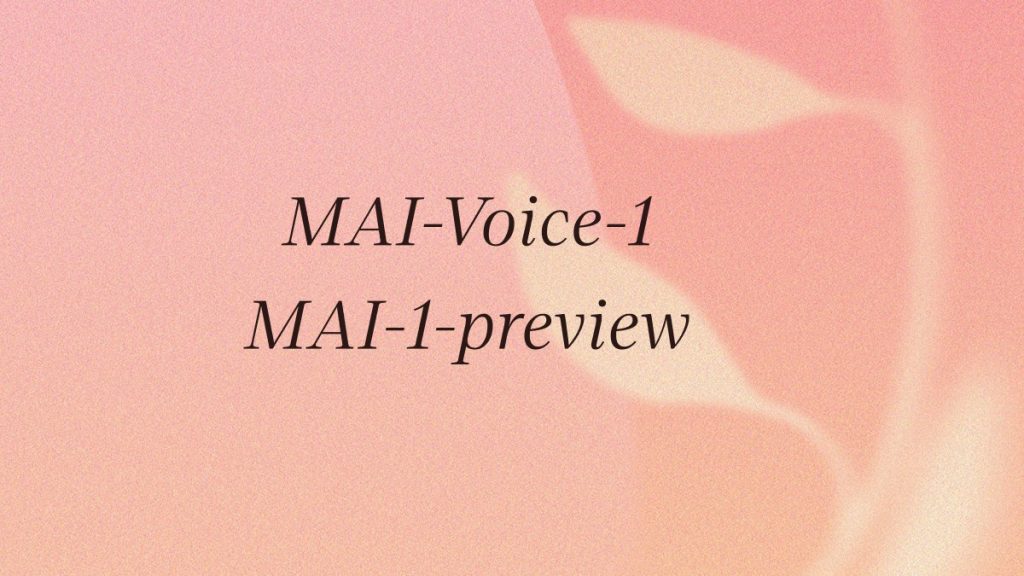Microsoft has a multi-billion-dollar stake in OpenAI. But while the world has been watching the GPT train roll on, Microsoft has been busy working on its own thing behind the scenes. It’s called MAI, short for Microsoft AI, and it looks like the company doesn’t want to be just OpenAI’s biggest customer anymore.
For non-Shona speakers, MAI means mother, and I’m going to pretend that’s where the name came from.
The first real signs of this move by Microsoft dropped recently with the launch of MAI-Voice-1 and MAI-1-preview.
MAI-Voice-1 is a speech model that can generate a minute of audio in under a second, on a single GPU. That’s ridiculous speed and efficiency, and it’s already showing up in Copilot Labs for things like “Copilot Daily” and quick podcast generation.
MAI-1-preview is the large language model Microsoft’s been quietly training on a cluster of 15,000-GPUs. It’s in testing now, and early benchmarks suggest it’s aiming straight for the OpenAI–Anthropic–Google tier of reasoning performance.
To add to that, Microsoft also hired Mustafa Suleyman, co-founder of DeepMind and former CEO of Inflection AI, to lead the MAI thing. So, clearly, this isn’t just a side project.
Why This Matters
Microsoft’s relationship with OpenAI has been complicated. On one hand, GPT powers Copilot, Bing, and plenty of Microsoft 365 features.
On the other hand, relying on a single partner for core AI infrastructure has its risks, especially when OpenAI’s priorities don’t always align with Microsoft’s. MAI should be the backup plan.
The strategy is pretty straightforward:
Reduce dependence on OpenAI while still integrating GPT where it makes sense.
Push custom models optimised for Microsoft’s products, faster, cheaper, and more tightly integrated.
Go directly to developers and compete with OpenAI. There are billions to be made in the generative AI game, and Microsoft would obviously want to take more of it for itself.
In other words, Microsoft wants to keep OpenAI close, but not too close.
The Bigger Picture
MAI isn’t here to replace GPT-4 or GPT-5 just yet, but the company is clearly working towards an AI future it controls.
With OpenAI, Google DeepMind, Anthropic, Meta, and now Microsoft all building models, the battle is only getting fiercer, and so partnerships make sense, but independence matters more.
For us, this could mean cheaper Copilot features, faster responses, and eventually, AI tools fine-tuned for Windows and Microsoft 365. For OpenAI it means its biggest backer is also becoming its biggest competitor.
Microsoft hasn’t said when the full MAI-1 model will roll out, but given its 500-billion-parameter size and current testing, experts think late 2025 feels likely. If it delivers, the AI landscape could look very different by this time next year.
Again, if all this leads to more years with free tiers, then I love the competition.

